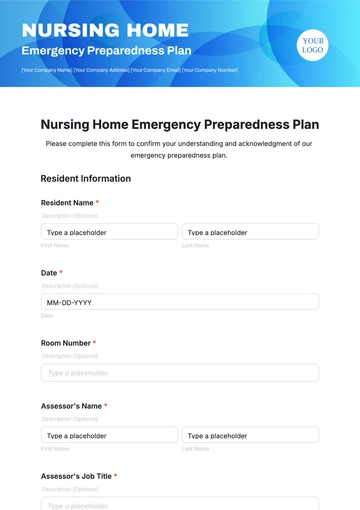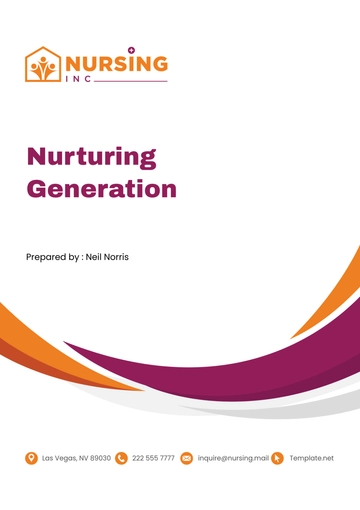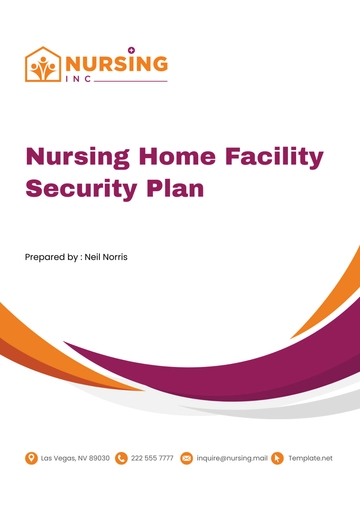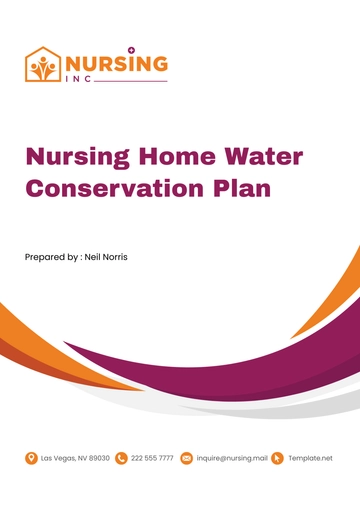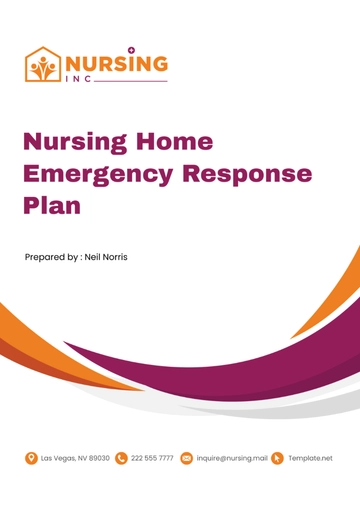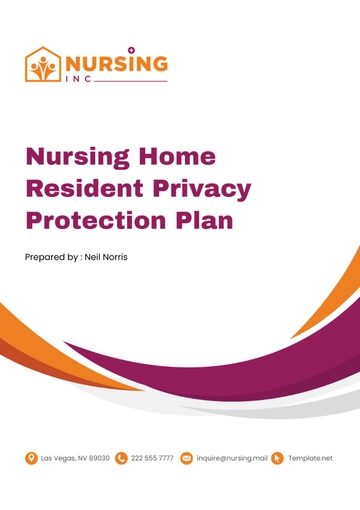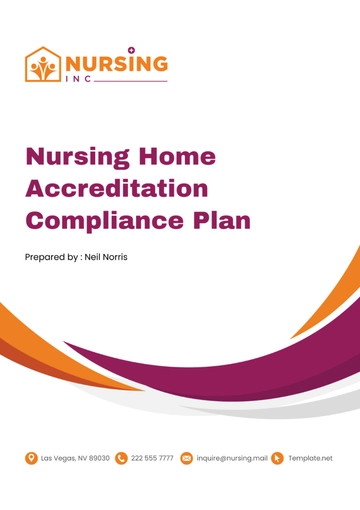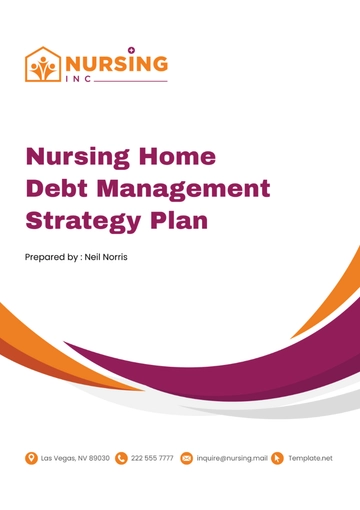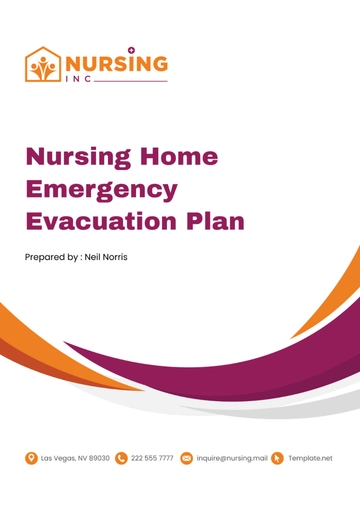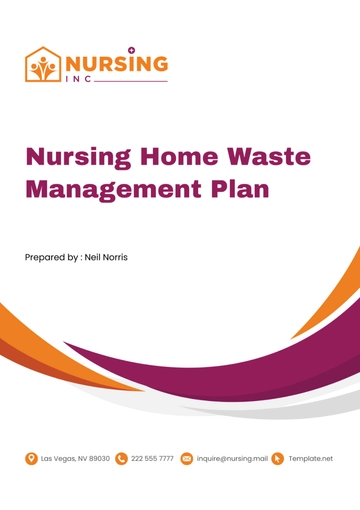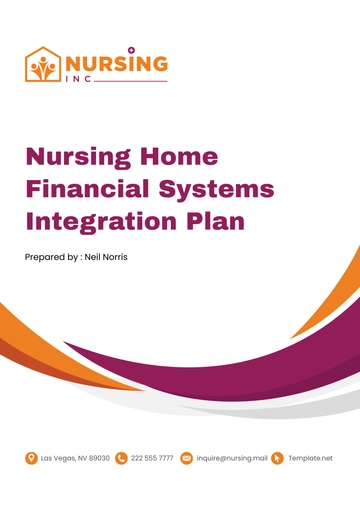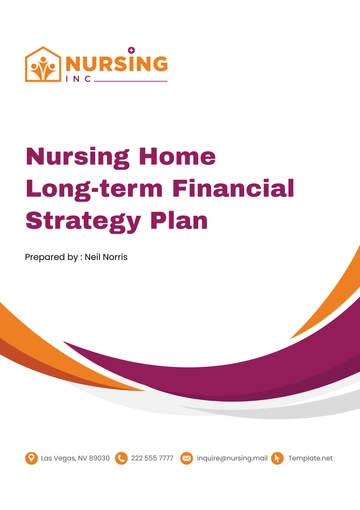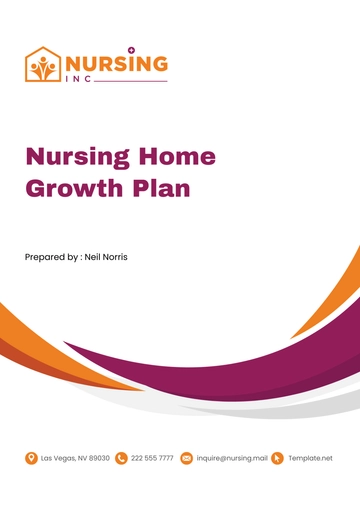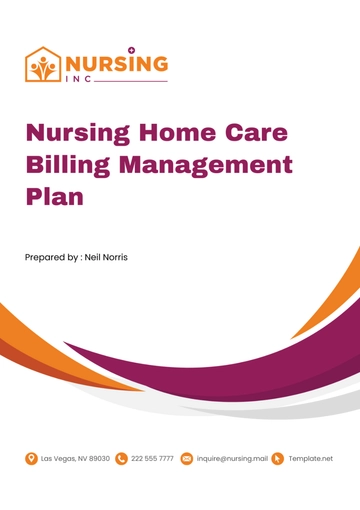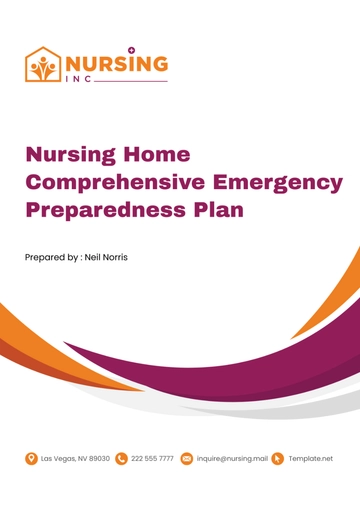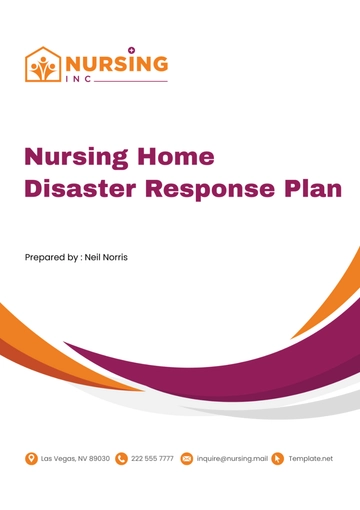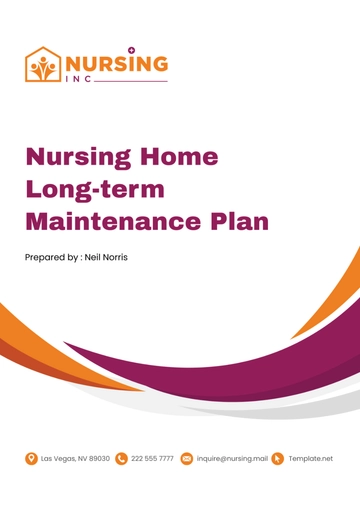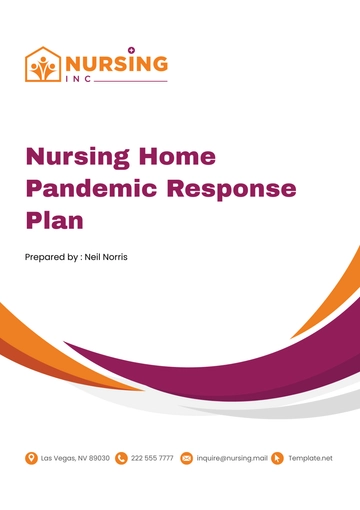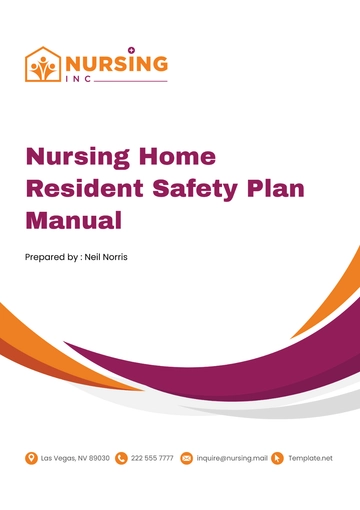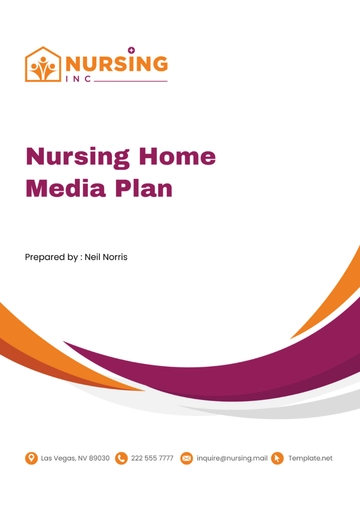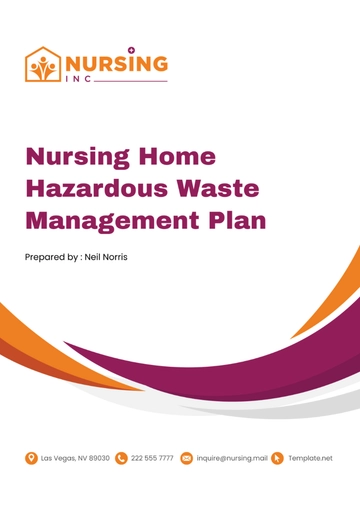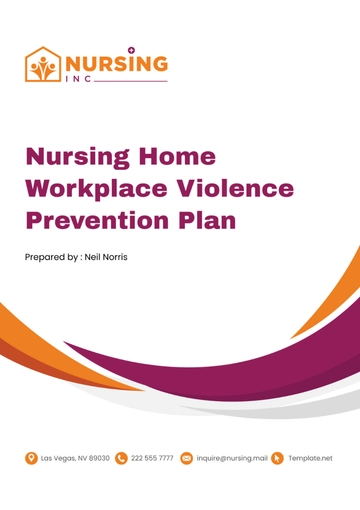Free Nursing Home Utility Management Plan
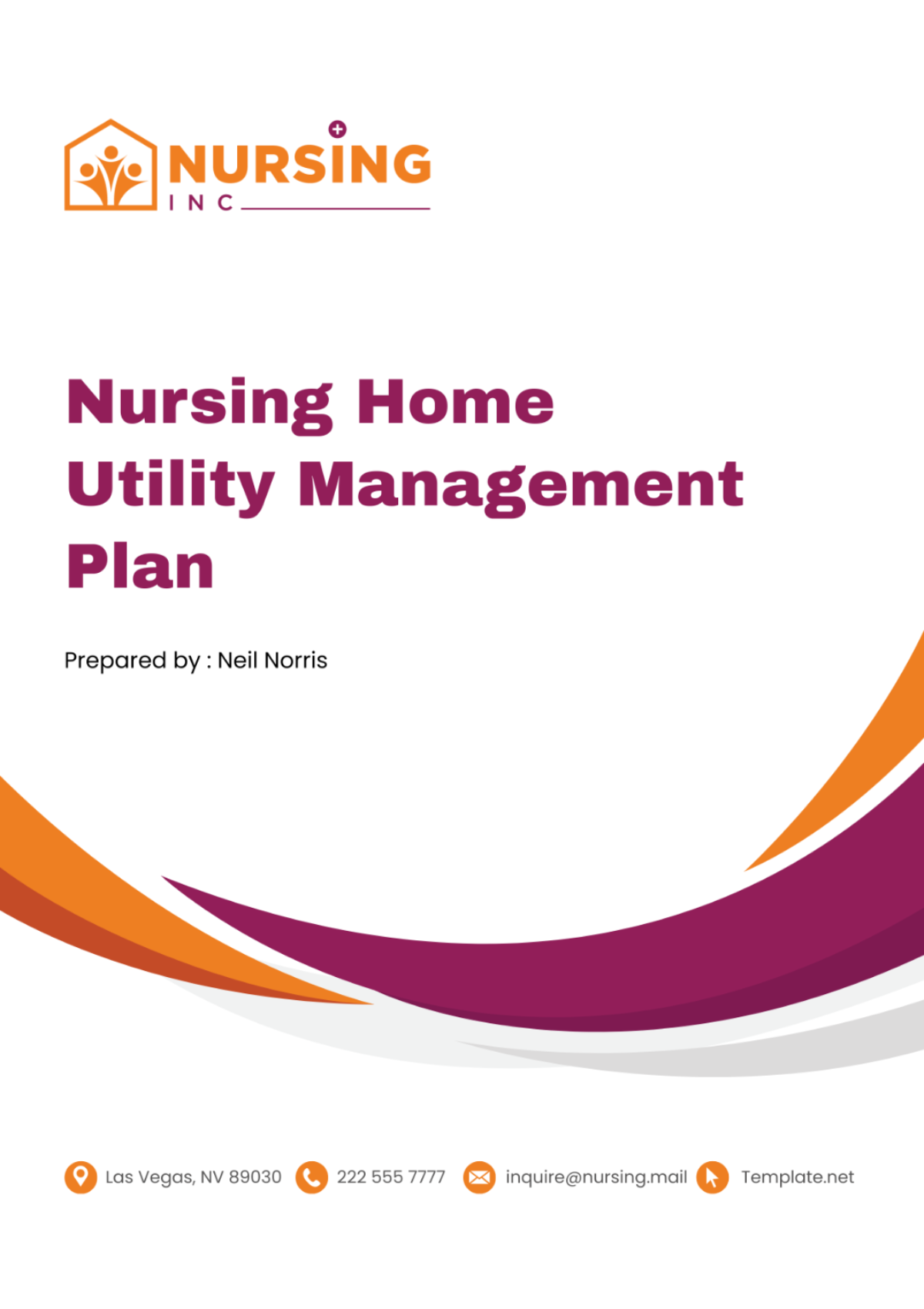
Introduction
This Utility Management Plan is a strategic document designed to ensure the efficient, reliable, and safe operation of all utility systems within [Your Company Name]. This plan addresses the management of electrical, water, natural gas, HVAC, and waste management systems, aiming to provide a comfortable and secure environment for residents and staff. It outlines our commitment to compliance with regulatory standards and our dedication to sustainability and conservation practices.
Objective
The goal of this plan is to provide a structured approach to managing [Your Company Name]’s utility services, ensuring they are used efficiently and sustainably. We aim to minimize disruptions, reduce environmental impact, and promote the health and safety of our residents and staff by maintaining optimal utility operations.
Scope
The plan applies to all utility systems at [Your Company Name]. It encompasses the management practices for electrical power, water supply, natural gas, HVAC systems, and waste management. The plan is relevant to all facility employees, from management to operational staff, and includes guidelines for third-party contractors.
Responsibilities
The effective management and operation of utility systems necessitate a clear delineation of responsibilities among various stakeholders. The roles outlined below are critical to the successful implementation of the Utility Management Plan:
Facility Management: Charged with the overarching responsibility for the Utility Management Plan, facility management spearheads the strategic direction and ensures the allocation of necessary resources. This role involves liaising with regulatory bodies, securing compliance, and managing contracts with third-party service providers.
Maintenance Staff: Maintenance staff are tasked with monitoring system performance, identifying inefficiencies, and recommending upgrades or modifications to enhance sustainability and reduce operational costs. They are also the first responders to utility emergencies, acting swiftly to mitigate risks to residents and property.
Third-party Service Providers: External experts and contractors bring specialized skills to the maintenance and improvement of utility systems. They are responsible for conducting annual comprehensive checks, implementing system upgrades, and providing emergency services outside the scope of the in-house maintenance team's capabilities.
Sustainability Coordinator: The Sustainability Coordinator develops initiatives to reduce the nursing home’s carbon footprint, including energy conservation measures and waste reduction strategies. This role involves tracking utility consumption, setting sustainability goals, and engaging staff and residents in conservation efforts.
Utility Systems Description and Data
The utility infrastructure is designed to provide a safe, comfortable, and environmentally responsible living and working environment. Below is an expanded description of our primary utility systems, supported by detailed data.
Electrical System
Our electrical infrastructure is designed to meet the high demand of a healthcare facility, ensuring reliability and safety for all residents and staff. It comprises a grid connection supported by high-capacity backup generators, which are automatically engaged during power outages to prevent disruptions in critical services. The system includes energy-efficient lighting and appliances, reducing consumption and environmental impact.
Electrical Consumption and Capacity:
Month | Total Consumption | Peak Load | Backup Generator Capacity |
|---|---|---|---|
January | 25,000 kWh | 350 kW | 500 kW |
Electrical Consumption and Capacity provides a detailed monthly breakdown of electricity usage, highlighting our commitment to energy efficiency and sustainability.
Water Supply System
The water supply system is engineered to provide clean, potable water for all uses within the nursing home, including drinking, sanitation, and irrigation. It integrates municipal water sources with an on-site well, ensuring redundancy. Water treatment facilities on-site guarantee the purity and safety of water for residents, particularly those with health vulnerabilities. Our water conservation measures, such as low-flow fixtures and irrigation controls, significantly reduce water usage without impacting care quality.
Water Usage and Sources:
Month | Municipal Water | Well Water | Total Water Usage |
|---|---|---|---|
January | 1,200,000 Liters | 50,000 Liters | 1,250,000 Liters |
Water Usage and Sources reflects our comprehensive approach to water management, showcasing the effectiveness of our conservation efforts and the reliability of our dual-source system.
Utility Management Strategies
The Utility Management Strategies are designed to ensure the efficient, sustainable, and reliable operation of all utility services. These strategies are rooted in best practices and innovative solutions that contribute to the environmental and economic goals of the facility.
Energy Efficiency Initiatives: Implementing energy-efficient lighting, HVAC systems, and appliances across the facility. Utilizing smart systems and sensors to automatically adjust lighting and temperature based on occupancy and time of day, significantly reducing energy consumption.
Water Conservation Measures: Installing low-flow fixtures and implementing a rainwater harvesting system to reduce dependence on municipal water supply. Engaging in water-wise landscaping to minimize irrigation needs, alongside regular audits of water usage to identify and address leaks promptly.
Sustainable Waste Management: Adopting a comprehensive recycling program, including the separation of organic waste for composting. Partnering with waste management services that prioritize recycling and the safe disposal of hazardous materials, aiming to achieve a significant reduction in landfill contributions.
Renewable Energy Adoption: Exploring and integrating renewable energy sources such as solar panels or wind turbines to supplement the facility’s energy needs, reducing reliance on fossil fuels and decreasing greenhouse gas emissions.
Preventive Maintenance Schedule: Regularly scheduled inspections and maintenance of all utility systems to prevent breakdowns and extend the lifespan of equipment. This includes the cleaning of air filters, inspection of electrical systems, and servicing of HVAC units.
Risk Management and Contingency Planning
Effective risk management and contingency planning are crucial for maintaining continuous and safe utility services. [Your Company Name] identifies potential utility system failures and implements strategic plans to mitigate these risks, ensuring the well-being of residents and staff.
Risk Identification: Regularly assessing utility systems to identify potential risks, including power outages, water supply contamination, and system failures.
Contingency Plans: Developing and documenting specific action plans for each identified risk, detailing steps to mitigate impacts on resident care and facility operations.
Emergency Preparedness: Equipping the facility with backup generators, alternative water sources, and portable HVAC units to maintain critical operations during utility failures.
Training and Drills: Conducting regular training sessions and emergency drills for staff to ensure readiness and effective response to utility disruptions.
Risk Management and Contingency Planning:
Risk Category | Identified Risks | Contingency Measures | Training Frequency |
|---|---|---|---|
Electrical | Power Outage | Backup Generators | Bi-annually |
Water | Supply Contamination | Alternative Sources | Annually |
HVAC | System Failure | Portable Units | Annually |
Waste | Disposal Interruption | Temporary Storage | Bi-annually |
Performance Monitoring and Improvement
Monitoring the performance of utility systems is essential for identifying improvement opportunities and ensuring the efficiency and sustainability of operations. We utilize a variety of metrics and feedback mechanisms to continuously enhance utility management practices.
Utility Audits: Conducting regular audits of energy, water, and waste systems to assess performance and identify areas for improvement.
Benchmarking: Comparing utility usage and efficiency metrics against industry standards and historical data to set performance targets.
Resident and Staff Feedback: Collecting and analyzing feedback from residents and staff regarding comfort and utility services to guide improvements.
Continuous Education: Providing ongoing education for staff on new technologies, conservation practices, and sustainability initiatives to foster a culture of continuous improvement.
Performance Monitoring and Improvement:
Utility System | Performance Metric | Target | Actual | Improvement Actions |
|---|---|---|---|---|
Electrical | kWh per resident per month | ≤ 500 | 520 | Upgrade to LED lighting |
Water | Liters per resident per day | ≤ 120 | 130 | Install low-flow fixtures |
HVAC | System Efficiency Rating | SEER ≥ 16 | SEER = 14 | Schedule HVAC upgrade |
Waste | Recycling Rate | ≥ 60% | 55% | Enhance recycling program |
Training and Awareness Programs
At [Your Company Name] Nursing Home, we recognize the vital role that comprehensive training and awareness programs play in the successful implementation of our Utility Management Plan. These programs are designed not only to enhance the skills and knowledge of our staff regarding efficient utility management but also to foster a culture of sustainability and proactive risk management within our facility. Our approach is multi-faceted, targeting various aspects of utility management, compliance, conservation, and emergency response.
Staff Training Programs
Technical Training for Maintenance Staff: Focused on the operational aspects of utility systems, this program equips our maintenance team with the latest techniques and knowledge for managing electrical, water, HVAC, and waste management systems.
Emergency Response and Contingency Plan Training: All staff members participate in regular training sessions that cover emergency procedures related to utility disruptions. These sessions include hands-on drills on using backup systems, executing evacuation plans if necessary, and utilizing emergency communication tools effectively.
Sustainability and Conservation Workshops: Aimed at all employees, these workshops highlight the importance of resource conservation and introduce practical measures that staff can adopt in their daily routines to reduce energy, water, and waste.
Regulatory Compliance Seminars: These seminars ensure that staff members are up-to-date with the latest regulatory requirements and standards related to utility management in healthcare facilities.
Resident and Community Awareness Programs
Resident Orientation on Utility Conservation: New residents receive an orientation that includes information on how they can contribute to the facility’s conservation efforts, such as proper recycling practices, water conservation habits, and energy-saving tips.
Community Engagement Events: [Your Company Name] hosts events aimed at raising awareness about sustainability and conservation within the wider community. These events provide an opportunity to share our initiatives and encourage community members to adopt similar practices.
Continuous Learning and Feedback Loop
Ongoing Education Opportunities: We provide continuous learning opportunities for staff through online courses, webinars, and subscriptions to relevant publications. This ensures that our team remains at the forefront of utility management and sustainability practices.
Feedback Mechanisms: Regular surveys and suggestion boxes are available for both staff and residents to share their ideas and feedback on utility management and conservation practices. This feedback is invaluable for identifying areas for improvement and developing new training content.
Performance Tracking and Recognition
Performance Tracking: The effectiveness of our training and awareness programs is regularly evaluated through assessments, feedback forms, and performance metrics in utility management.
Recognition Programs: Staff members who demonstrate exceptional commitment to implementing conservation measures, improving utility management, or responding effectively to utility emergencies are recognized through awards and acknowledgments.
Through these programs, [Your Company Name] ensures that every member of our community is equipped, engaged, and empowered to contribute to the efficient, safe, and sustainable management of our utility resources.
Conclusion
The Utility Management Plan is a living document that guides the efficient and effective management of utility services at [Your Company Name]. By adhering to this plan, we ensure the provision of reliable utilities, support the well-being of our residents and staff, and contribute to the sustainability of our community and environment.
- 100% Customizable, free editor
- Access 1 Million+ Templates, photo’s & graphics
- Download or share as a template
- Click and replace photos, graphics, text, backgrounds
- Resize, crop, AI write & more
- Access advanced editor
Streamline your facility's utility operations with the Nursing Home Utility Management Plan Template from Template.net. This indispensable resource is fully editable and customizable, designed to optimize energy and resource use across your nursing home. Tailored specifically for ease of use in our Ai Editor Tool, this template enables efficient planning and execution of utility management strategies.
You may also like
- Finance Plan
- Construction Plan
- Sales Plan
- Development Plan
- Career Plan
- Budget Plan
- HR Plan
- Education Plan
- Transition Plan
- Work Plan
- Training Plan
- Communication Plan
- Operation Plan
- Health And Safety Plan
- Strategy Plan
- Professional Development Plan
- Advertising Plan
- Risk Management Plan
- Restaurant Plan
- School Plan
- Nursing Home Patient Care Plan
- Nursing Care Plan
- Plan Event
- Startup Plan
- Social Media Plan
- Staffing Plan
- Annual Plan
- Content Plan
- Payment Plan
- Implementation Plan
- Hotel Plan
- Workout Plan
- Accounting Plan
- Campaign Plan
- Essay Plan
- 30 60 90 Day Plan
- Research Plan
- Recruitment Plan
- 90 Day Plan
- Quarterly Plan
- Emergency Plan
- 5 Year Plan
- Gym Plan
- Personal Plan
- IT and Software Plan
- Treatment Plan
- Real Estate Plan
- Law Firm Plan
- Healthcare Plan
- Improvement Plan
- Media Plan
- 5 Year Business Plan
- Learning Plan
- Marketing Campaign Plan
- Travel Agency Plan
- Cleaning Services Plan
- Interior Design Plan
- Performance Plan
- PR Plan
- Birth Plan
- Life Plan
- SEO Plan
- Disaster Recovery Plan
- Continuity Plan
- Launch Plan
- Legal Plan
- Behavior Plan
- Performance Improvement Plan
- Salon Plan
- Security Plan
- Security Management Plan
- Employee Development Plan
- Quality Plan
- Service Improvement Plan
- Growth Plan
- Incident Response Plan
- Basketball Plan
- Emergency Action Plan
- Product Launch Plan
- Spa Plan
- Employee Training Plan
- Data Analysis Plan
- Employee Action Plan
- Territory Plan
- Audit Plan
- Classroom Plan
- Activity Plan
- Parenting Plan
- Care Plan
- Project Execution Plan
- Exercise Plan
- Internship Plan
- Software Development Plan
- Continuous Improvement Plan
- Leave Plan
- 90 Day Sales Plan
- Advertising Agency Plan
- Employee Transition Plan
- Smart Action Plan
- Workplace Safety Plan
- Behavior Change Plan
- Contingency Plan
- Continuity of Operations Plan
- Health Plan
- Quality Control Plan
- Self Plan
- Sports Development Plan
- Change Management Plan
- Ecommerce Plan
- Personal Financial Plan
- Process Improvement Plan
- 30-60-90 Day Sales Plan
- Crisis Management Plan
- Engagement Plan
- Execution Plan
- Pandemic Plan
- Quality Assurance Plan
- Service Continuity Plan
- Agile Project Plan
- Fundraising Plan
- Job Transition Plan
- Asset Maintenance Plan
- Maintenance Plan
- Software Test Plan
- Staff Training and Development Plan
- 3 Year Plan
- Brand Activation Plan
- Release Plan
- Resource Plan
- Risk Mitigation Plan
- Teacher Plan
- 30 60 90 Day Plan for New Manager
- Food Safety Plan
- Food Truck Plan
- Hiring Plan
- Quality Management Plan
- Wellness Plan
- Behavior Intervention Plan
- Bonus Plan
- Investment Plan
- Maternity Leave Plan
- Pandemic Response Plan
- Succession Planning
- Coaching Plan
- Configuration Management Plan
- Remote Work Plan
- Self Care Plan
- Teaching Plan
- 100-Day Plan
- HACCP Plan
- Student Plan
- Sustainability Plan
- 30 60 90 Day Plan for Interview
- Access Plan
- Site Specific Safety Plan
